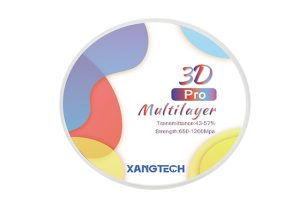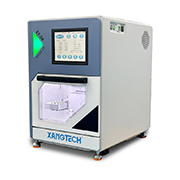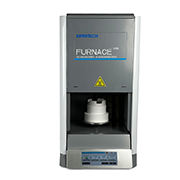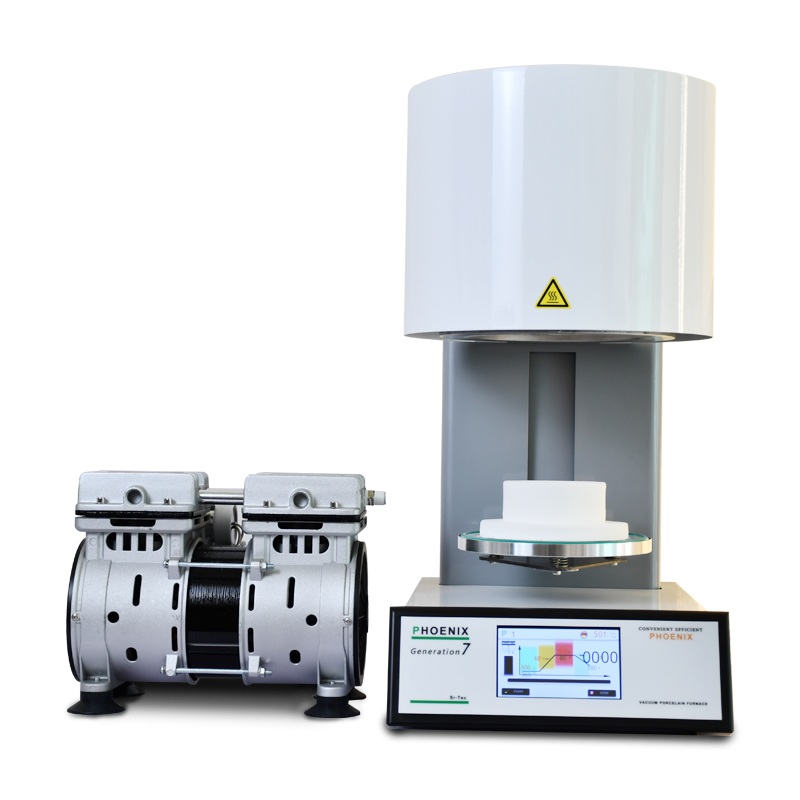Qu'est-ce qu'un four en porcelaine utilisé en dentisterie?
Un four en porcelaine dentaire est un élément clé dans les laboratoires et cliniques dentaires d’aujourd’hui. Il est principalement utilisé pour cuire et briller des pièces de céramique comme des couronnes, des ponts, des placages et des incrustations. Ces fours transforment la céramique de base en restaurations dures et impressionnantes qui agissent et ressemblent à de vraies dents.
Comment un four en porcelaine dentaire rend-il les restaurations réelles?
Les fours en porcelaine chauffer la céramique juste juste pour obtenir ce regard dentaire naturel. Ils cuisent des couches de porcelaine à des températures définies pour verrouiller la bonne couleur, brillance et texture. Cela aide les techniciens à copier l’ombre exacte et la brillance des dents d’un patient.
Vous pouvez sélectionner des modèles de chauffage spécifiques pour chaque matériau de restauration. Ce type de contrôle s'assure que les restaurations se mélangent avec d'autres dents.
Quelles sont les pièces de base d'un four à porcelaine?
Éléments de chauffage et leur travail dans le chauffage
L'élément chauffant est le cœur et l'âme de tout four à porcelaine. Fabriqués à partir de matériaux durs comme le disiliciure de molybdène ou le carbure de silicium, ces morceaux émettent la chaleur nécessaire pour cuire la céramique. Diffuser la chaleur de manière uniforme est un gros problème. Il s’assure que l’ensemble de la pièce dentaire est cuit juste, de sorte que vous ne finissez pas avec des résultats déformés ou à moitié cuits.
Systèmes de contrôle de température pour cuisson spot-on
Des contrôles de température super précis sont un must pour clouer des restaurations dentaires cohérentes. Ces installations utilisent des thermocouples et des gadgets numériques pour surveiller de près la chaleur pendant le processus de cuisson. Vous pouvez ajuster les paramètres de température pour correspondre aux modèles exacts de chauffage nécessaires pour différents types de porcelaine.
La chambre de chauffage et son rôle dans le maintien des pièces solides
La chambre de chauffage est une boîte scellée construite pour maintenir la chaleur constante pendant le feu. Il doit avoir une isolation killer pour maintenir la chaleur et économiser de l'énergie. Une chambre stable permet aux restaurations de chauffer et de refroidir agréablement et lentement, évitant les fissures des changements soudains de température.
Système de refroidissement
Un système de refroidissement solide est essentiel après la phase principale de cuisson. Un refroidissement trop rapide ou inégal peut gâcher la céramique avec des fissures ou des contraintes. Les fours en porcelaine d'aujourd'hui sont livrés avec des étapes de refroidissement programmables qui verrouillent la résistance du matériau tout en conservant la forme parfaite.
Rencontrez XANGTECH: Technologie de four en porcelaine à bascule
À XANGTECHNous proposons tous des outils géniaux pour les professionnels dentaires. Avec 11 ans sous notre ceinture, Nanyang Liandong Biotechnology Co., Ltd. se spécialise dans les matériaux de laboratoire dentaire et l'équipement, y compris notre produit étoile - le avancé four à porcelaine construit pour le travail en céramique spot-on.
Qui est XANGTECH et ce qui rend ses fours spéciaux?
Nos fours emballent une petite taille avec une grande puissance. Le four en porcelaine avancé XANGTECH combine une conception compacte avec une fonctionnalité exceptionnelle, ce qui en fait le plus petit four en céramique de sa catégorie. Malgré leur petite empreinte, ces unités offrent des performances robustes adaptées à tous les types de restaurations en céramique.
Ingénierie ponctuelle pour des résultats dentaires stables
Chaque four dispose d'un contrôle de température de haut niveau qui maintient les erreurs à /- 1 ° C, de sorte que chaque restauration reçoit le même traitement thermique. L'étalonnage automatique avant chaque utilisation maintient les choses précises à chaque fois.
Fonctionnalités faciles à utiliser pour les laboratoires et cliniques dentaires
Nous avons construit nos fours avec des commandes simples afin que les techniciens puissent se concentrer sur leur métier, pas sur la machine. Les raccordements USB facilitent la connexion aux programmes PC. Avec 99 programmes personnalisés et intégrés, ils fonctionnent pour toutes sortes de matériaux et de techniques.
Spotlight on XANGTECH’s top four en porcelaine dentaire
Notre modèle le plus populaire dispose d'une taille de chambre: Dia: 90 x H: 70mm, parfait pour le traitement d'une seule unité ou de petits lots. Il comprend une spirale de quartz durable pour une distribution efficace de la chaleur et fonctionne à une puissance maximale de 1,6 kW tout en supportant un chauffage rapide jusqu'à 200°C/min. Ces caractéristiques le rendent à la fois économe en énergie et économiseur de temps, caractéristiques idéales pour les laboratoires fréquentés visant à augmenter la productivité.

Comment un four en porcelaine aide-t-il à rendre les restaurations naturelles?
Pourquoi la couleur correspond-t-elle à une grande chose dans le tir?
L'appariement des couleurs pendant la cuisson est énorme parce que la céramique déplace les nuances en fonction de la chaleur. Nos fours permettent aux techniciens de régler les températures afin que les glazures sortent parfaitement, sans trop cuire ou sous-cuire, ce qui peut jeter la couleur finale.
Glaçure et ombre pendant le feu
Grâce à des rampes de température précises et à des temps de maintien, les techniciens peuvent ajuster la façon dont les couleurs apparaissent dans les vitrages ou les porcelaines en couches. Cela leur permet d'obtenir la teinte exacte ou la brillance pour correspondre aux dents à proximité.
Comment le tir à plusieurs étapes affecte l'aspect final
De nombreuses restaurations nécessitent plusieurs cuisson - pour la dentine, l'émail, la teinture et le glaçure final. Un bon four gère ces étapes sans gâcher entre les rondes. Enregistrer des programmes personnalisés signifie que vous pouvez répéter chaque étape exactement pour différentes tâches.
Garder votre four en porcelaine dentaire en bonne forme
À quelle fréquence devriez-vous vérifier ou nettoyer votre four?
Pour le maintenir en douceur, nettoyez la chambre chaque semaine ou plus si vous l’utilisez beaucoup. Vérifiez l’étalonnage souvent, tous les jours, si vous travaillez sur des cas importants.
L'étalonnage automatique de la température avant chaque processus de torréfaction aide à réduire l'intervention manuelle tout en prolongeant la durée de vie de l'équipement grâce à des paramètres de fonctionnement cohérents.
Conseils pour que votre équipement dure plus longtemps
Ne surchargez pas les plateaux au-delà de ce qui est conseillé. Gardez les vents libres. Assurez-vous que la tension correspond aux spécifications (tension de travail: 110V / 220V 50 / 60HZ). Accrochez-vous aux matériaux approuvés dans la chambre pour éviter les coups sur les pièces chauffantes.
Conseils de sécurité pour faire fonctionner des fours à haute température
Portez des gants résistants à la chaleur lors du chargement ou du déchargement des plateaux. Ne laissez pas un cycle de course seul. Suivez les règles de ventilation du fabricant, en particulier pour les cycles de vide (Vide: -97Kpa). Vérifiez les cordons et les bouchons pour l'usure avant d'utiliser.

FAQ (questions fréquentes)
Q: Quelle est la différence entre un four ordinaire et un four à porcelaine dentaire?
R: Les deux deviennent chauds, mais un four en porcelaine dentaire a un contrôle plus fin sur les rampes de température, les temps de maintien, les paramètres d'aspiration et les programmes. Ceux-ci sont essentiels pour les restaurations céramiques délicates et pas habituellement dans les fours ordinaires.
Q: Puis-je utiliser un four à porcelaine pour tous les types de restaurations en céramique?
R : Vous pariez ! Surtout les modèles comme le nôtre chez XANGTECH qui incluent 99 programmes personnalisés vous permettant de personnaliser les paramètres en fonction du type de matériau, que ce soit la céramique à couches de zirconie ou les placages en verre-céramique.
Q: Combien de temps prend un cycle de cuisson typique dans un four à porcelaine dentaire?
R : Selon le type de matériau et le nombre d’étapes (par exemple, tache vs glaçure), les cycles varient généralement de 15 minutes à une heure, mais grâce à notre taux de chauffage : 0-200°C/min, les programmes encore plus longs s’achèvent efficacement sans compromettre la qualité.












